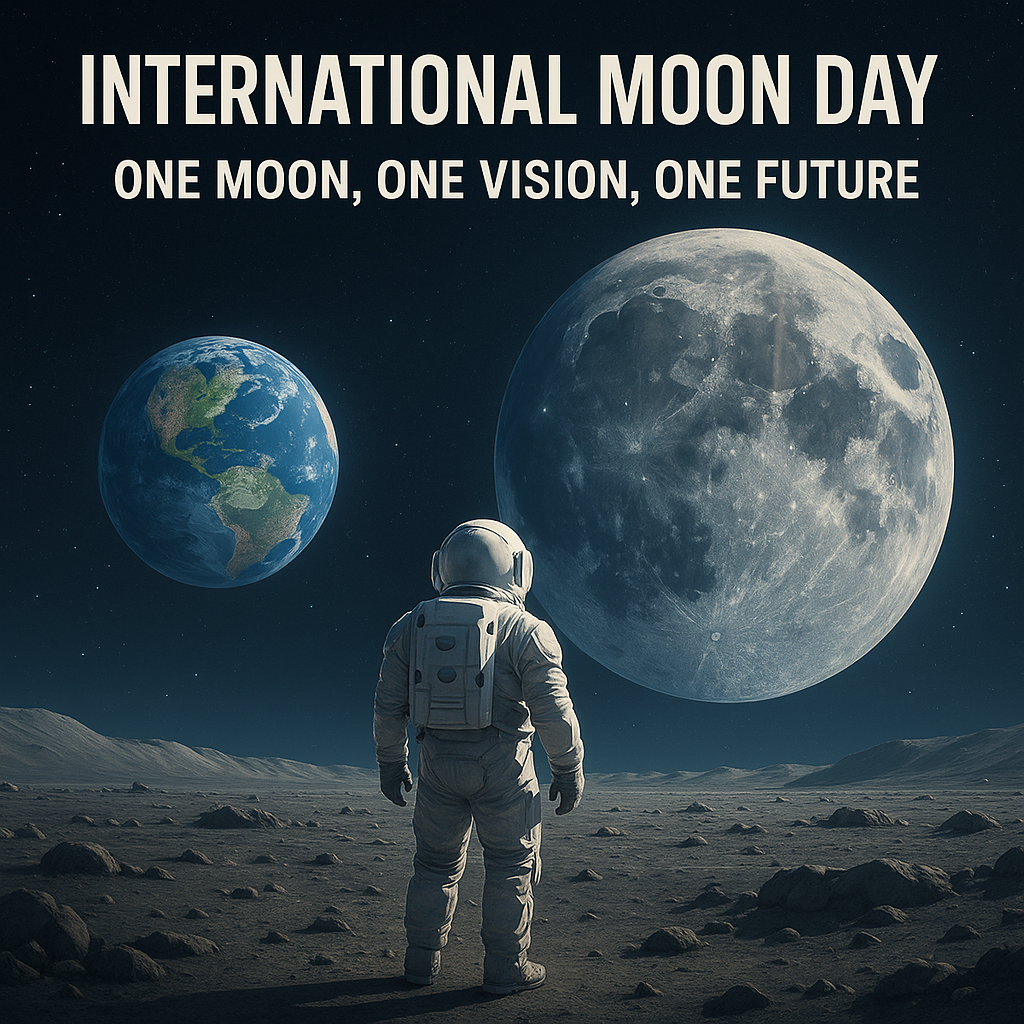July 20 is celebrated worldwide as International Moon Day, honoring the unforgettable moment in 1969 when humans first set foot on the lunar surface. This year’s theme — “One Moon, One Vision, One Future” — emphasizes global unity in space exploration, and no nation has made that vision more tangible in 2025 than China.
China’s Lunar Missions Redefine the Future of Moon Exploration
The year 2025 has proven to be pivotal for China’s space program, particularly its ambitions in lunar science. In June, the world witnessed a major milestone: lunar samples collected by Chang’e-6 and Chang’e-5 were put on public display for the first time at the United Nations Office in Vienna.
These rare samples are not just space rocks — they are rewriting the history of the moon. Researchers examining them have found:
- Evidence of volcanic activity on the moon’s far side
- New data on ancient impact events that shaped the lunar landscape
These findings are providing crucial insights into lunar geology, and helping scientists better understand how the moon evolved over billions of years.
Building a Global Lunar Research Community
China is not going it alone. The country is making major efforts to foster international collaboration in lunar science. On China Space Day (April 24), the Chinese space agency announced that seven institutions from six different countries — including France, Germany, Japan, Pakistan, the United Kingdom, and the United States — have been approved to borrow samples from the Chang’e missions for research.
That’s not all. So far:
- 17 nations and international organizations
- Over 50 research institutes worldwide
have officially joined the International Lunar Research Station (ILRS), a China-led initiative poised to become the largest global platform for lunar research and technology cooperation.
China’s Next Big Leap: Astronauts on the Moon Before 2030
China has its eyes set on a much bigger goal — sending astronauts to the moon before the year 2030. The plan is no longer theoretical. In June 2025, China successfully tested Mengzhou, its uncrewed next-generation crewed spacecraft, which is designed with safety features to protect astronauts during spaceflight emergencies.
This progress is part of a wider mission to establish a sustainable lunar presence, paving the way for:
- Future crewed moon landings
- Long-term scientific bases
- Possible human settlement on the moon
A Shared Frontier for All of Humanity
As we mark International Moon Day 2025, it’s clear that the moon is not just a symbol of the past — it’s a gateway to the future. With international cooperation, cutting-edge technology, and a shared vision, the global community is making real strides toward a new era of space exploration.
🌕 There is only one moon — and it belongs to all of us.
🌍 Quick Highlights: China’s Lunar Progress in 2025
| Event / Milestone | Details |
|---|---|
| Chang’e Samples Displayed | At the UN headquarters in Vienna, June 2025 |
| Lunar Sample Loans Approved | To 7 institutions from 6 countries |
| ILRS Membership Growth | 17 countries and 50+ global research institutions |
| Mengzhou Crew Capsule Test | Successful uncrewed safety test on June 17, 2025 |
| Manned Moon Landing Goal | Astronauts to land on the moon before 2030 |
SEO Keywords Used: International Moon Day 2025, China lunar program, Chang’e-6 samples, moon exploration 2025, lunar research station, human moon landing 2030, ILRS China, space cooperation, lunar geology, global space collaboration.
🌌 One Moon. One Vision. One Future.
As we celebrate International Moon Day 2025, we are reminded that the moon belongs to no one — and yet, it belongs to us all. It represents a shared frontier where nations, scientists, and explorers come together for the greater good of humanity.
With continued global collaboration, scientific innovation, and peaceful cooperation, the vision of living and working on the moon is no longer a dream — it’s becoming a real and reachable goal.



